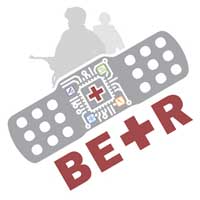| Feb 08, 2019 | |
Intelligent healing for complex wounds |
|
| (Nanowerk News) Blast injuries, burns, and other wounds experienced by warfighters often catastrophically damage their bones, skin, and nerves, resulting in months to years of recovery for the most severe injuries and often returning imperfect results. This long and limited healing process means prolonged pain and hardship for the patient, and a drop in readiness for the military. | |
| However, DARPA believes that recent advances in biosensors, actuators, and artificial intelligence could be extended and integrated to dramatically improve tissue regeneration. To achieve this, the new Bioelectronics for Tissue Regeneration (BETR) program asks researchers to develop bioelectronics that closely track the progress of the wound and then stimulate healing processes in real time to optimize tissue repair and regeneration. | |
 Paul Sheehan, the BETR program manager, described his vision for the technology as “not just personalized medicine, but dynamic, adaptive, and precise human therapies” that adjust to the wound state moment by moment to provide greater resilience to wounded warfighters. “Wounds are living environments and the conditions change quickly as cells and tissues communicate and attempt to repair,” Sheehan said. “An ideal treatment would sense, process, and respond to these changes in the wound state and intervene to correct and speed recovery. For example, we anticipate interventions that modulate immune response, recruit necessary cell types to the wound, or direct how stem cells differentiate to expedite healing.” The envisioned BETR technology would represent a sharp break from traditional wound treatments, and even from other emerging technologies to facilitate recovery, most of which are passive in nature. |
|
| Under current medical practice, physicians provide the conditions and time for the body to either heal itself when tissues have regenerative capacity or to accept and heal around direct transplants. Most people are familiar with interventions that include casts to stabilize broken bones or transplants of healthy ligaments or organs from donors to replace tissues that do not regenerate. | |
| Passive approaches often result in slow healing, incomplete healing with scarring, or, in some unfortunate cases, no healing at all. Blast injuries in particular seem to scramble the healing processes; 23 percent of them will not fully close (EBioMedicine, "Lessons of War: Turning Data Into Decisions"). Moreover, research shows (Bone & Joint Research, "Blast injuries and heterotopic ossification") that in nearly two thirds of military trauma cases — a rate far higher than with civilian trauma injuries — these patients suffer abnormal bone growth in their soft tissue due to a condition known as heterotopic ossification, a painful experience that can greatly limit future mobility. | |
| Although recent experimental treatments offer some hope for expedited recovery, many of these new approaches remain static in nature. For instance, some “smart” bandages emit a continuous weak electric field or locally deliver drugs. Alternatively, hydrogel scaffolds laced with a drug can recruit stem cells, while decellularized tissue re-seeded with donor cells from the patient help avoid rejection by the host’s immune system. These newer approaches may indeed encourage growth of otherwise non-regenerative tissue, but because they do not adapt to the changing state of a wound, their impact is limited. | |
| “To understand the importance of adaptive treatments that respond to the wound state, consider the case of antibiotic ointments,” Sheehan explained. “People use antibiotics to treat simple cuts, and they help if the wound is infected. However, completely wiping out the natural microbiota can impair healing. Thus, without feedback, antibiotics can become counterproductive.” | |
| Recent technologies have begun to close the loop between sensing and intervention, looking for signs of infection such as changes in pH level or temperature to trigger treatment. To date, however, these systems have been limited to monitoring changes induced by bacteria. For BETR, DARPA intends to use any available signal, be it optical, biochemical, bioelectronic, or mechanical, to directly monitor the body’s physiological processes and then to stimulate them to bring them under control, thereby speeding healing or avoiding scarring or other forms of abnormal healing. | |
| By the conclusion of the four-year BETR program, DARPA expects researchers to demonstrate a closed-loop, adaptive system that includes sensors to assess wound state and track the body’s complex responses to interventions; biological actuators that transmit appropriate biochemical and biophysical signals precisely over space and time to influence healing; and adaptive learning approaches to process data, build models, and determine interventions. To succeed, the BETR system must yield faster healing of recalcitrant wounds, superior scar-free healing, and/or the ability to redirect abnormally healing wounds toward a more salutary pathway. | |
| DARPA anticipates that successful teams will include expertise in bioelectronics, artificial intelligence, biosensors, tissue engineering, and cellular regeneration. Further, DARPA encourages proposals that address healing following osseointegration surgery, which is often necessary to support the use of advanced prosthetics by wounded warfighters. | |
| DARPA will host a Proposers Day on March 1, 2019 in Arlington, Virginia, to provide more information to researchers interested in submitting a proposal for funding. Additional information is available at https://go.usa.gov/xENCQ. A forthcoming Broad Agency Announcement, to be posted to the Federal Business Opportunities website, will include full details of the program. |
| Source: DARPA |
